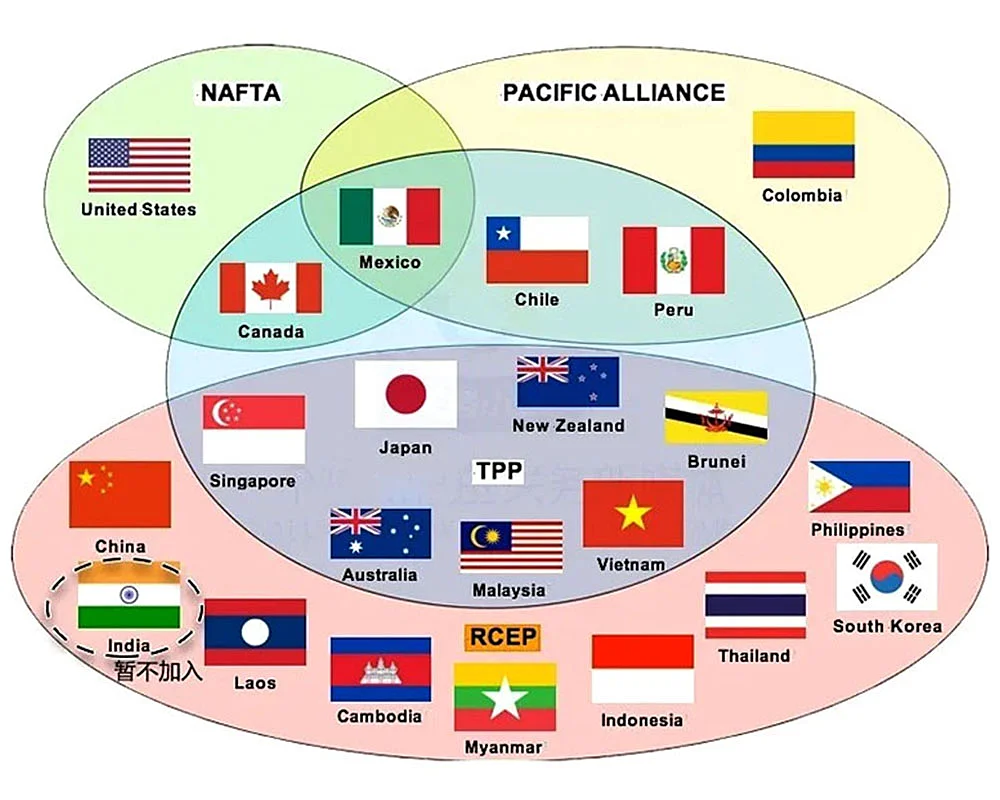RCEP takes effect on January 1, 2022
RCEP takes effect on January 1, 2022
About RECP, freight forwarders need to know the good points of foreign trade
In terms of trade in goods, the 15 parties have made arrangements for liberalization of trade in goods by means of bilateral two-by-two offers, and more than 90% of the trade in goods in the region will eventually achieve zero tariffs after the agreement comes into effect, and mainly the tariffs will be reduced to zero immediately and within 10 years, so that the RCEP FTA is expected to fulfill all the commitments on liberalization of trade in goods in a relatively short period of time
1. The overall number of zero-tariff products will exceed 90%, and customs clearance will be more convenient
In terms of trade in goods, the 15 parties have made arrangements for the liberalisation of trade in goods by means of bilateral two-by-two offers, and more than 90% of the trade in goods in the region will eventually achieve zero tariffs after the agreement comes into effect, and mainly the tariffs will be reduced to zero immediately and within 10 years, so that the RCEP FTA is expected to fulfil all the commitments on the liberalisation of trade in goods in a relatively short period of time.
Among other things, in terms of customs procedures and trade facilitation, the RCEP simplifies customs clearance procedures by adopting pre-determination, pre-arrival processing and the use of information technology to facilitate efficient management of customs procedures.
Where possible, it strives to achieve the release of goods within six hours of arrival for express shipments and perishable goods, promoting the development of new cross-border logistics such as express delivery, and promoting the rapid clearance and trade growth of fresh products such as fruits and vegetables and meat, eggs and dairy products.
2. China and Japan reach first tariff concession arrangement
According to Japanese media reports, both China and South Korea will withdraw the tariffs set on about 90% of Japanese industrial products in phases under the framework of the agreement, which is the most anticipated element by the Japanese economic sector.
In particular, some of Japan's exports to China in sectors where Japan has a large advantage, such as auto parts, will be reduced directly to zero tariffs when the agreement comes into effect.
Among the major commodity categories that China exports to Japan, textiles are probably the industry sector that will gain the most.
Most of the textile and garment categories originally faced import tariffs of around 8%-11% imposed by Japan, while the Japanese side has committed under the RCEP to gradually reduce them until the import tariffs on textile and garment categories are reduced to zero after 15 years.
On the other hand, in addition to five important agricultural products such as rice and wheat, Japan will gradually withdraw tariffs on about 50% of agricultural products from China and South Korea.
3. More countries will use the RMB for transactions
Currently, ASEAN has become the most important channel for the internationalisation of the RMB. The RMB is becoming more and more popular in ASEAN countries and its penetration rate is increasing.
With the deepening of RCEP, more ASEAN countries and regions will choose to trade in RMB, and the function of RMB as an investment and reserve currency will be increasingly prominent.
4. Cross-border e-commerce will benefit more
Cross-border e-commerce involves multiple chains and links of operation, and the signing of the RCEP agreement will benefit multiple links of cross-border e-commerce, including reducing or even eliminating the risk of tariffs levied on postal parcels, lowering the cost of raw materials, accelerating the internationalisation of the RMB and thus reducing the exchange risk of enterprises, and reducing the construction cost of overseas logistics and warehousing.
5. Convenience for Chinese enterprises to build factories overseas
RCEP has greatly expanded the scope of trade and investment liberalization by establishing a common framework of rules of origin and rules to strengthen intellectual property protection, trade in services and reduce barriers to investment. It will further facilitate outbound investment by Chinese enterprises.
The question on everyone's mind now is: when will the RCEP enter into force?
According to the regulations, the RCEP agreement needs to be ratified by at least 9 out of 15 members before it can enter into force, including at least 6 ASEAN members and at least 3 countries from China, Japan, Korea, Australia and New Zealand.
Next, each RCEP member will carry out its own domestic legal approval process in an effort to promote the early entry into force of the agreement.
After the signing of RCEP, the number of FTAs signed by China will reach 19 and the number of FTA partners will reach 26, which will undoubtedly greatly enhance the "gold content" of China's FTA network.
With the new China-Japan FTA through the RCEP, China's trade with its FTA partners will account for 35% of all trade coverage, up from the current 27%.
Undoubtedly, in this "unprecedented change", foreign trade people who seize the opportunity and follow the trend will have a broader "money".
